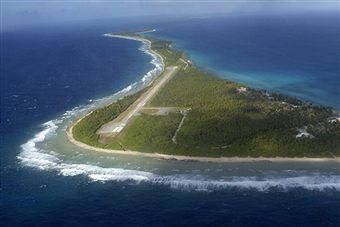 The President of the Maldives can sell his snorkel: he’ll be waving not drowning.
The New Scientist carries a fascinating article, examining the research of Paul Kench
of the University of Auckland and Arthur Webb of the South Pacific Applied Geoscience Commission. Using aerial photographs and high-resolution satellite images, Kench and Webb have found that 23
out of 27 low-lying Pacific islands, deemed to be vulnerable to rising sea levels, have grown by up to 10 percent in 40 years. Local sea levels have risen by 120 millimetres over the period.
The President of the Maldives can sell his snorkel: he’ll be waving not drowning.
The New Scientist carries a fascinating article, examining the research of Paul Kench
of the University of Auckland and Arthur Webb of the South Pacific Applied Geoscience Commission. Using aerial photographs and high-resolution satellite images, Kench and Webb have found that 23
out of 27 low-lying Pacific islands, deemed to be vulnerable to rising sea levels, have grown by up to 10 percent in 40 years. Local sea levels have risen by 120 millimetres over the period.
Coral is defying the apocalyptic flooding scenarios. Reef coral surrounding the islands is eroded and deposited to form atolls or coastal spurs. Because coral is a live organism it is inexhaustible and continues to grow in its new environment. It is unclear if these new spurs of land will be habitable, but it suggests that low-lying coral islands can withstand rising sea levels.
This corresponds with the findings of Nils-Axel Mörner, the former head of Geodynamics at Stockholm University, who contributed to the Spectator’s climate change supplement last December. Mörner has evidence that non-coral landmasses like Bangladesh can withstand rising sea levels also. Do re-read his article; it’s a tonic to the IPCC’s dictative climate change debate.
Climate changes – that’s what it does. Eventually, fossil fuels will be exhausted. It is irrational to resist the corollaries of those facts. But it is senseless to expend funds on unnecessary projects. If Pacific islands have a natural and self-perpetuating defence against the sea, then why interfere?






Comments